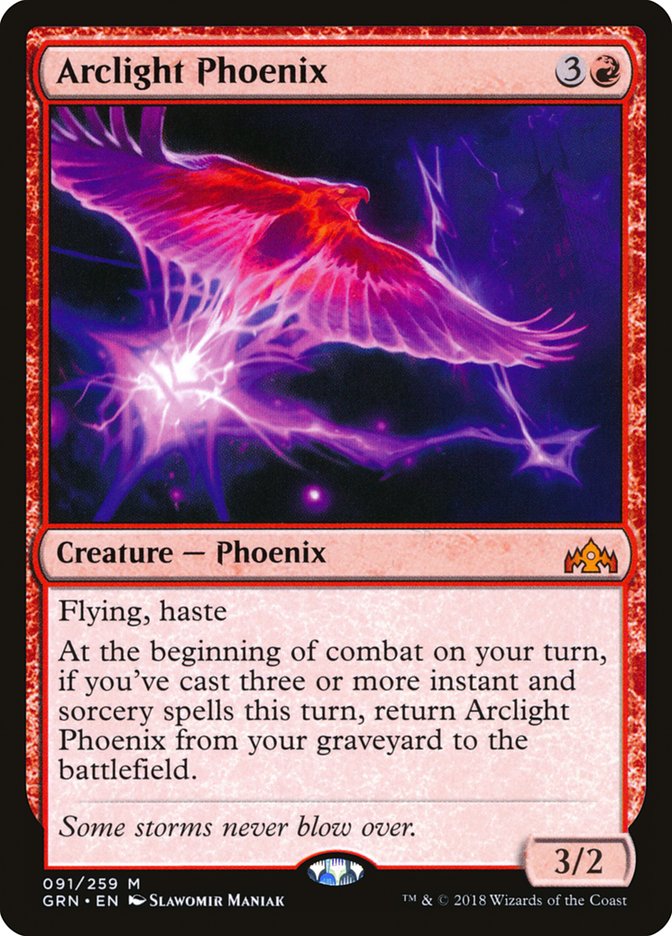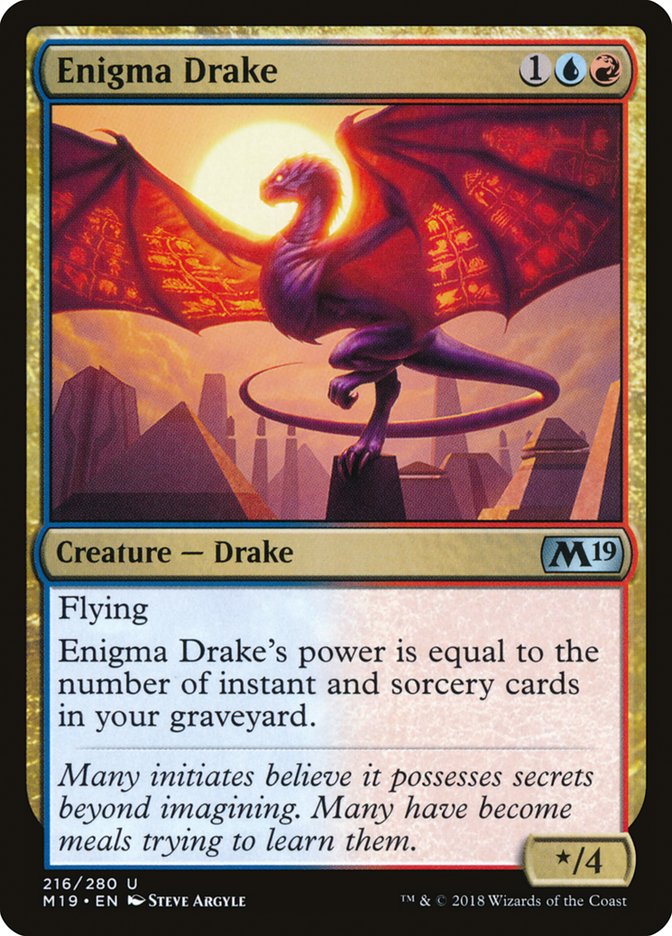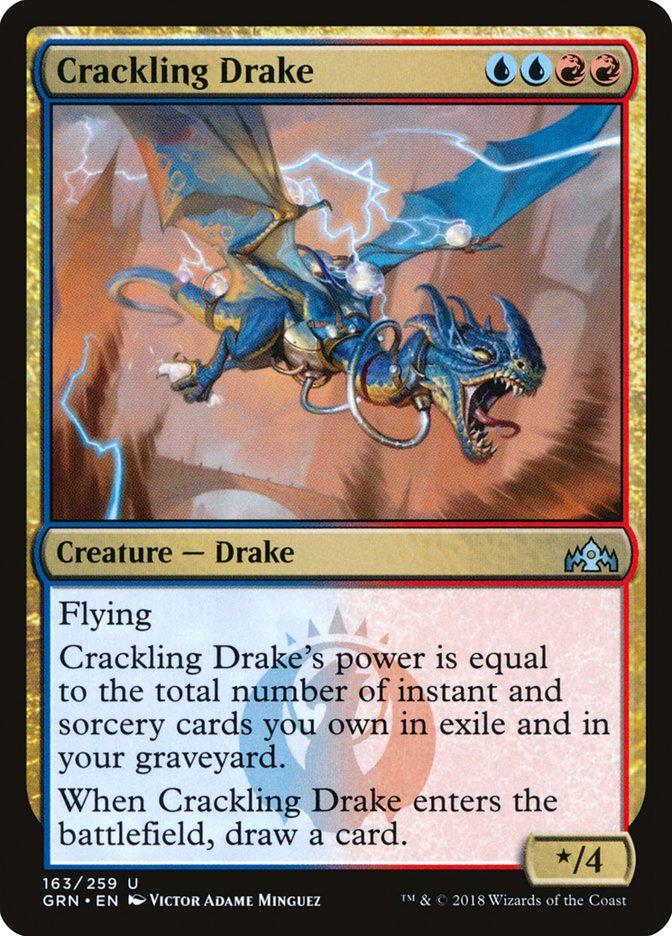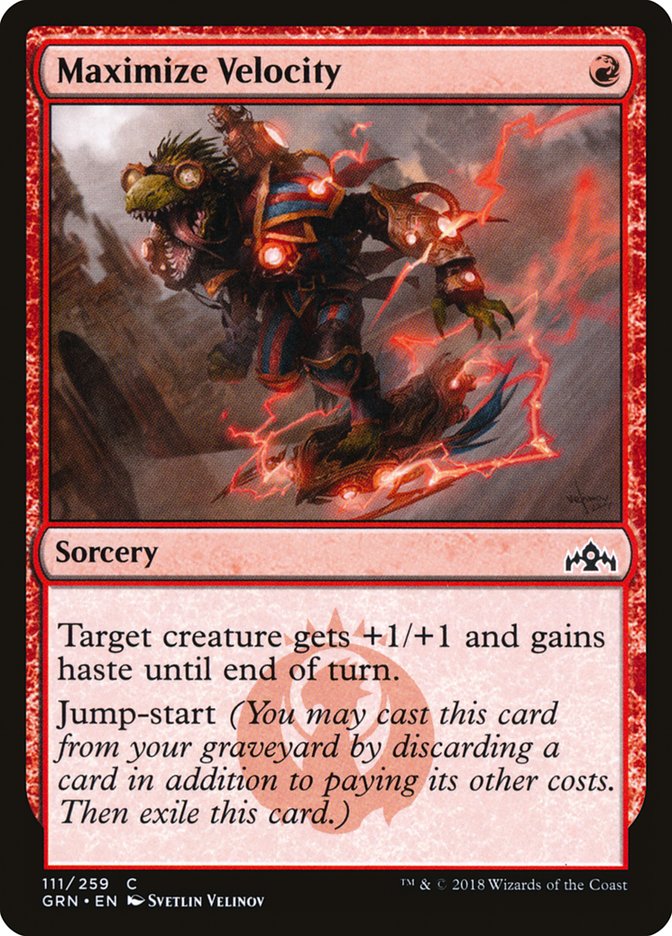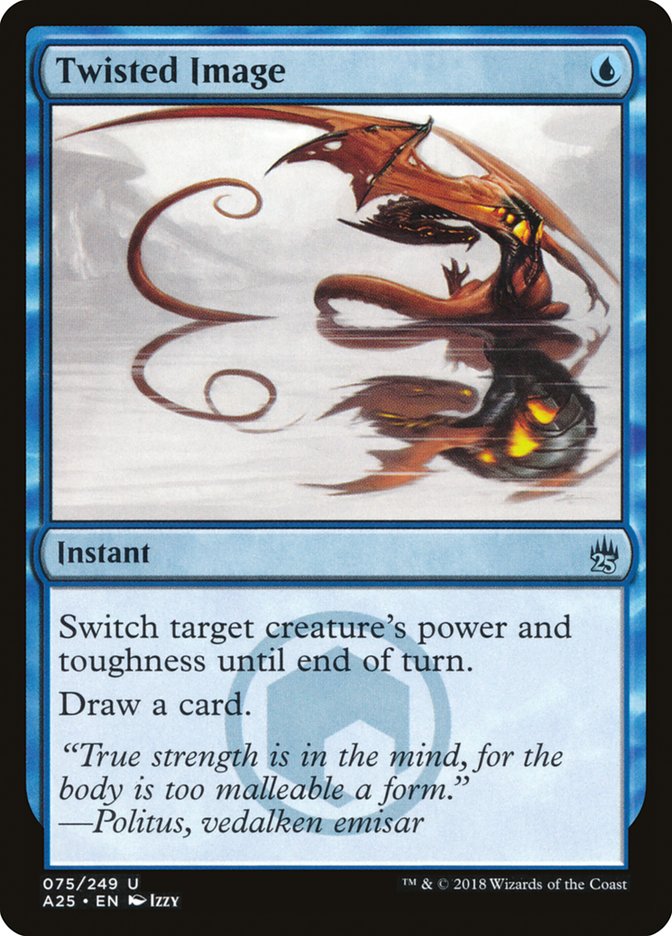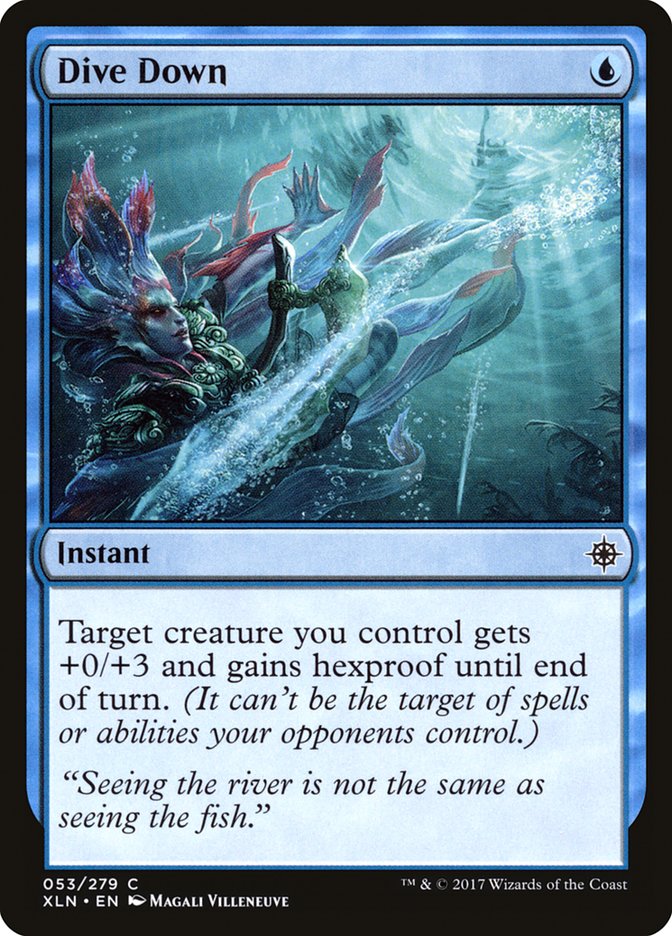In just a few days, some of the game’s best and brightest will be coming to
Roanoke, VA for SCG CON
Winter. The main event, the Season Two Invitational, a multi-format
tournament using Standard and Modern. Players will need to master two
different decks in two wildly different formats if they want to stand a
chance. And normally, I would be joining those competitors in testing for
the event, looking to cement my name in SCG Tour history and walking away
$20,000 richer and with my likeness on a token.
But I’ll be paired up [down? – DWest] with Cedric Phillips,
broadcasting the event on twitch.tv/SCGTour alongside
Ryan Overturf and Matthias Hunt. The festivities will be starting earlier
than normal, as the three-day event requires a start time of 11:00am ET on
Friday. But while I’m not playing in the event myself, I can certainly
bestow upon you the knowledge I’ve acquired over the last few months from
playing a ton of Standard and Modern.
Here’s what I would play at the Invitational:
Modern
We’ll start with Modern, as the last few weeks have produced some highly
volatile results. One week, you have Amulet Titan taking both of the top
slots. And this past weekend in Baltimore, Arclight Phoenix was all the
rage! What is happening?
Long story short, people are going to play whatever they want to play.
Personally, I think everyone should just keep playing the same deck for the
entirety of a format and hope that the metagame shifts in such a way that
your archetype is favorable. Chances are your deck will be very good for
one tournament a season. In Modern, I’ve never seen someone be overly
successful by “metagaming” each week. The players with the best overall
performance are the ones that pick a deck and become a master of the
archetype.
Changing cards inside of your archetype is reasonable and greatly
encouraged. Trends and shifts in metagame result in needing different
sideboard cards, removal packages, or various interaction points. When
Dredge gets a new toy (Creeping Chill) and people start to play with it
more, having an extra sideboard card or two for interacting with the
graveyard is important.
I can understand abandoning an archetype after a while if the winning
stops. Decks like Infect drive me crazy when I lose a bunch of matches in a
row because it doesn’t actually feel like I’m playing Magic. When you put
all the pressure on your opponent to interact with you, it can be
frustrating when they interact in the right ways and pick you apart.
With that said, don’t be afraid to change decks and try to learn a new one
inside and out. Cards are added to the format regularly, and you can see
Modern change in a hurry. Last year, Grixis Death’s Shadow and Colorless
Eldrazi were two of the best decks in the format. Now, are either even
playable?
Just this past weekend, we saw a breakout performance for Arclight Phoenix,
and I can guarantee you that many people would love to pick up and play a
deck featuring Thing in the Ice (myself included). So, my job as a content
creator is to give you options to switch to when your deck is no longer
working, or to help you update the deck you’re already working on. Ross
Merriam’s win with the new Izzet Arclight deck just goes to show that new
archetypes can break into this outrageously large (and deep) format.
Creatures (13)
Lands (18)
Spells (29)

So, here’s the question: What would I play in the tournament? If I were a
master with every archetype, my gut says to play something that absolutely
crushes Arclight Phoenix. People love shiny new things, and Arclight
Phoenix encourages playing a type of Magic that a lot of people love
(myself included). However, most versions of Arclight Phoenix aren’t fast
enough to win games (on average) against opponents who generate an
outrageous amount of mana. In my testing with Arclight Phoenix before
Baltimore, I found that any deck with Primeval Titan was particularly
brutal. If my opponent was trying to generate a ton of extra mana, I was in
trouble.
Arclight Phoenix is inherently strong against decks trying to kill
creatures. The recursive ability of Arclight Phoenix ensures that
traditional spot removal is mediocre. On top of that, one of your free
spells is Gut Shot, which gives you a natural advantage against any deck
featuring a ton of one-toughness creatures. Until people catch up on their
removal suites or stop playing decks that get pounded by Gut Shot, Arclight
Phoenix should continue to do well.
What can I say? I see an Izzet deck and I play it!
Creatures (12)
Lands (18)
Spells (30)
- 4 Lightning Bolt
- 4 Serum Visions
- 4 Opt
- 2 Lightning Axe
- 4 Manamorphose
- 1 Twisted Image
- 3 Gut Shot
- 4 Faithless Looting
- 1 Thought Scour
- 1 Izzet Charm
- 1 Chart a Course
- 1 Maximize Velocity
Sideboard

First up, let’s discuss the biggest change.
I think this change is more about the philosophy behind the deck rather
than one being strictly better than the other. I never really found myself
running out of spells to cast, so the extra draw ability on Crackling Drake
was never a huge deal. And as we all know, one mana can make all the
difference in a format as fast as Modern.
In order to beat Arclight Phoenix, people need to move away from
traditional spot removal and try to ignore what you’re doing. And if that’s
the case, speed matters a lot more than drawing a card. So if that’s the
case, the only question left to ask is whether or not Crackling Drake
counting cards in exile is worth it. In Ross’s initial assessment of
Crackling Drake, one of the appeals was being fully functional through
graveyard hate like Leyline of the Void and Rest in Peace. In reality, no
one plays Rest in Peace, and virtually any deck that plays Leyline of the
Void is too fast for Crackling Drake to matter.
I was never a huge fan of Crackling Drake in the games I played, but I’m
sure it shines against virtually every fair deck you play against. The
problem is that having a four-mana threat against faster Modern decks is
definitely not where you want to be.
Since the inception of the Izzet Drakes deck in Standard, I’ve had to
listen to Brad Nelson call Maximize Velocity plus one of the two Drakes a
“Splinter Twin” combo. And I haven’t been able to get it out of my head
since! Plus, any spell that can be cast twice has value, and giving your
Enigma Drake haste to kill your opponent out of nowhere is pretty sweet.
An old throwback to the days where Infect needed answers to Spellskite,
Twisted Image is a great spell for the mirror (kills Thing in the Ice)
while also acting as a cheap way to kill any Noble Hierarch while drawing a
card. Most of the time, it just cycles, but the games where it actually
kills a creature are absurd.
I found myself with a useless Alpine Moon in my sideboard against a few too
many opponents. While most of my opponents will likely have Nature’s Claim
or similar to kill my Blood Moon, you’ll straight up win the game if they
don’t. I understand the reason for Alpine Moon in the original version over
Blood Moon. Being a cheaper alternative is a big deal. But with Amulet
Titan making a comeback, I think it’s important to have a few more ways to
interact with them positively. The matchup is quite bad, but a few copies
of Blood Moon might help you steal a game or two.
And that’s it for Modern! Not a lot of changes to Ross’s version, though I
think there’s a lot to be said about the “perfect” build of Izzet Phoenix,
or any Arclight Phoenix deck for that matter. The version that Ross played
against in the finals might just be better. We don’t have enough data yet
to make that determination. For now, I’m going to lean on Ross’s version
because Thing in the Ice is extremely my jam. And for Modern, that’s what
it’s all about baby.
Standard
Standard is a different animal entirely. The shifts that the format can go
through over time force you to adapt quickly or pay the consequences. The
first three weeks of Guilds of Ravnica Standard produced wildly
different variations on the same Golgari Midrange archetype. Within each
major archetype lies a multitude of ways to build it. Want to play Jeskai
Control? Depending on the metagame, it could be correct to play Azor’s
Gateway, Search for Azcanta, or Treasure Map as your early filter/engine.
It should come as no surprise that I really like the idea of a control deck
ramping into Niv-Mizzet, Parun. The card is absolutely bonkers, and I don’t
know that I’ve lost a game of Standard yet where I got to untap with it. As
far as Treasure Map is concerned, it’s almost exactly what a deck like
Jeskai Control wants. Helping you hit land drops early is important, but it
also provides you with bursts of mana to catch up when you’re behind and
can act as a card advantage engine if you’re just playing a normal control
game.
I think the biggest surprise for me was the raw strength of Dive Down in
the format. Izzet Phoenix decks using Dive Down to save their creatures
from removal seemed awesome, but I never really thought about pairing it
with Niv-Mizzet, Parun. Well, not until my opponent absolutely embarrassed
me. The first time my opponent cast Dive Down on their Niv-Mizzet, Parun, I
laughed. “Wow, what a joke. Yeah, I guess I’m dead.” But then, during the
next game, I was terrified that my opponent would cast Niv-Mizzet, which I
couldn’t counter, and then have Dive Down to keep it alive. How could I
beat that combo?!
The joke is that you can’t. Niv-Mizzet, Parun is a messed up Magic card,
and doing whatever you need to do in order to protect it is worthwhile. And
doing it for one mana is no laughing matter. Even after sideboard,
protecting something like Lyra Dawnbringer is one of your best plans
against Mono-Red Aggro. Virtually all of them should have Banefire/Fight
with Fire coupled with three or four copies of Experimental Frenzy. Your
best bet is to close the games quickly, which needs to involve some large
threat and Dive Down.
I wasn’t a huge fan of Jeskai Control for the Pro Tour, if only because a
lot of different aggro decks performed well in major tournaments leading up
to the event. Threats like Adanto Vanguard and History of Benalia are more
than a little annoying, but you must shift with the times. At the moment,
virtually every Golgari pilot is attacking aggressive strategies via
Wildgrowth Walker. And with Golgari winning the PTQ this past weekend, I
expect it to be out in full force. Here’s the metagame breakdown that I
expect for the Invitational.
- 25% Golgari
- 20% Izzet Phoenix
- 10% Jeskai Control
- 10% Mono-Red Aggro
- 10% Boros Aggro/Mono-White Aggro
- 25% Other
With that in mind, I would like to build my Jeskai Control deck with this
breakdown in mind.
Creatures (4)
Planeswalkers (3)
Lands (25)
Spells (28)

For a tournament as important as the SCG Invitational, it’s important to
know how to sideboard against the more popular matchups. And with Standard
being in a constant flux, winning the sideboard war is more important than
ever.
VS Golgari Midrange
Out:

In:

Outside of Vivien Reid, they shouldn’t have too many ways to actually kill
your artifacts and enchantments. Make sure your Ixalan’s Binding is
targeting Vivien Reid and virtually nothing else, unless they force your
hand. Your sweepers are going to do a lot of work in this matchup, and
especially Star of Extinction after sideboard. Carnage Tyrant is certainly
good against you, but it isn’t unbeatable. You have two sweepers in the
maindeck to contain it, as well as two more in the sideboard. In a pinch,
you can use Deafening Clarion and copy it with Expansion to clean it up.
VS Izzet Phoenix
Out:

In:

After sideboard, you need to expect them to have some weird stuff that
might be tough to beat. Being aggressive is important, as you need a way to
punish them for spinning their wheels and relying on clunky cards like
Firemind’s Research and/or a Niv-Mizzet, Parun of their own. They should
side out most of their spot removal against you, making Legion Warboss into
an absolute powerhouse.
You want all your exiling removal and none of your sweepers, as you need
permanent ways to deal with Arclight Phoenix. There’s a good chance you end
up getting run down by Murmuring Mystic if you side out all your sweeper
effects, but that’s mostly because the card is naturally good against your
deck. It’s high toughness protects it from Lava Coil, and the fact that it
doesn’t need to attack makes it very strong against cards like Seal Away or
Settle the Wreckage. Your best bet to be aggressive and try to kill them
before they find it.
VS Jeskai Control
Out:

In:

If you suspect that your opponent has Enigma Drake, Crackling Drake, or
possibly Legion Warbosses of their own from the sideboard, keeping in Lava
Coil is fine. For the most part, the only cards that matter in the mirror
are Teferi, Hero of Dominaria and Niv-Mizzet, Parun. The weird part about
the mirror is that your opponents can build their Jeskai deck in wildly
different ways, and any cheap engine card can drastically alter how you end
up playing the rest of the game. I wrote about “taking initiative” in
control mirrors a while back, and a lot of that still holds true. If you
want to learn how to navigate a control mirror, I suggest
reading it here
.
VS Mono-Red
Out:

In:

Ideally, we would want something like Legion Warboss to punish them for
playing a card like Experimental Frenzy. In actuality, they leave in most
of their burn spells, so Legion Warboss almost never survives. In my
experience, you just don’t have enough time to go for the Explosion plan.
You must ramp out a big creature quickly, all while spending your free mana
in the first three or four turns just killing creatures to protect your
life total. When they hit their fourth mana and cast Experimental Frenzy,
you’re almost always tapped out, so you’ll need to find some way to either
close the game or kill the Experimental Frenzy. And like most matchups,
your best bet is ramping into Niv-Mizzet, Parun.
This is one matchup where something like Enigma Drake is definitely wanted.
Outside of throwing two burn spells at it, your opponent won’t have too
many ways to deal with it. And even if they do, you can occasionally catch
them with a Dive Down to protect it. Plus, it helps close games quickly. I
just think that, with the rise in popularity of Golgari, playing something
like Enigma Drake or Crackling Drake is a pretty big liability.
VS Boros Aggro/Mono-White Aggro
Out:

In:

Removal is obviously good against aggressive decks, but some of your spells
are situationally bad against their suite of creatures. Seal Away is
downright worthless against History of Benalia, where Adanto Vanguard
shrugs off Lava Coil and Deafening Clarion.
I’m not going to sugarcoat it. This matchup, as well as the Mono-Red
matchup, are not very good. For starters, if you don’t draw a Deafening
Clarion, you’re probably dead. That’s just math. And if you do draw
Deafening Clarion, they can still blank it with an Adanto Vanguard or
follow-up History of Benalia. And if everyone starts moving toward more
resilient creatures like Hunted Witness, you’re going to be in a lot of
trouble.
But that doesn’t mean you can’t win. Your draw can line up well against
them, or they could flood out, or a million other things. Maybe you’re on
the play and ramp into a fifth turn Niv-Mizzet, Parun with protection, all
while casting removal and Deafening Clarion along the way. The reason why
you’re playing Treasure Map and Niv-Mizzet, Parun is to steal games that
you wouldn’t win by conventional “control deck” means. You’re upping the
overall power level of your deck, but you’re also increasing your average
mana cost significantly. Four copies of Niv-Mizzet, Parun is sweet and all,
but it starts to feel real bad when you have two in your opener and draw a
third before you hit your sixth land.
I’m very much looking forward to casting this event, even though playing in
the Invitational is always a treat. I hope these decklists, reasons behind
them, and sideboard guide are helpful for you this weekend at #SCGCON or
whatever event you’re playing in this weekend! And if you do end up playing
one (or both!?) of these lists, come let me know! I might just give you a
shoutout from the booth!



